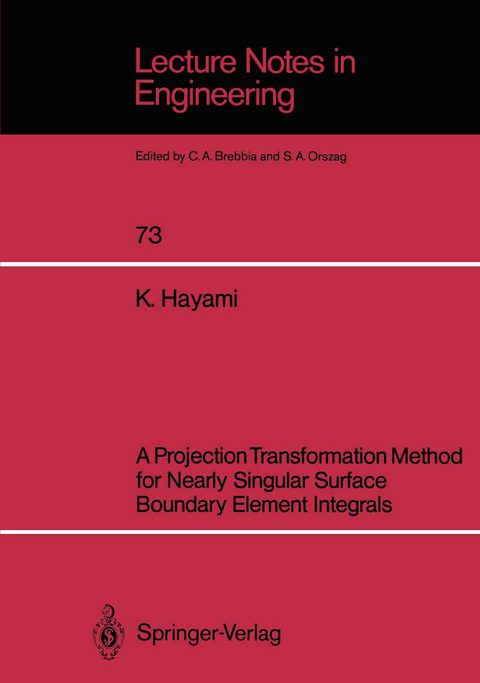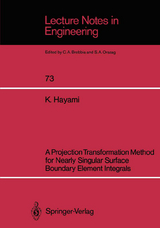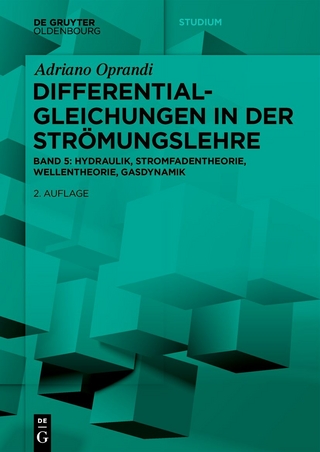A Projection Transformation Method for Nearly Singular Surface Boundary Element Integrals
Seiten
1992
|
1. Softcover reprint of the original 1st ed. 1992
Springer Berlin (Verlag)
978-3-540-55000-6 (ISBN)
Springer Berlin (Verlag)
978-3-540-55000-6 (ISBN)
In three dimensional boundary element analysis, computation of integrals is an important aspect since it governs the accuracy of the analysis and also because it usually takes the major part of the CPU time. The integrals which determine the influence matrices, the internal field and its gradients contain (nearly) singular kernels of order lIr a (0:= 1,2,3,4,.··) where r is the distance between the source point and the integration point on the boundary element. For planar elements, analytical integration may be possible 1,2,6. However, it is becoming increasingly important in practical boundary element codes to use curved elements, such as the isoparametric elements, to model general curved surfaces. Since analytical integration is not possible for general isoparametric curved elements, one has to rely on numerical integration. When the distance d between the source point and the element over which the integration is performed is sufficiently large compared to the element size (d 1), the standard Gauss-Legendre quadrature formula 1,3 works efficiently. However, when the source is actually on the element (d=O), the kernel 1I~ becomes singular and the straight forward application of the Gauss-Legendre quadrature formula breaks down. These integrals will be called singular integrals. Singular integrals occur when calculating the diagonals of the influence matrices.
I Theory and Algorithms.- 1 Introduction.- 2 Boundary Element Formulation of 3-d Potential Problems.- 3 Nature of Integrals in 3-d Potential Problems.- 4 Survey of Quadrature Methods for 3-d Boundary Element Method.- 5 The Projection and Angular & Radial Transformation (Part) Method.- 6 Elementary Error Analysis.- 7 Error Analysis using Complex Function Theory.- II Applications and Numerical Results.- 8 Numerical Experiment Procedures and Element Types.- 9 Applications to Weakly Singular Integrals.- 10 Applications to Nearly Singular Integrals.- 11 Applications to Hypersingular Integrals.- 12 Conclusions.- References.
| Erscheint lt. Verlag | 30.3.1992 |
|---|---|
| Reihe/Serie | Lecture Notes in Engineering |
| Zusatzinfo | X, 456 p. |
| Verlagsort | Berlin |
| Sprache | englisch |
| Maße | 170 x 242 mm |
| Gewicht | 772 g |
| Themenwelt | Mathematik / Informatik ► Mathematik ► Analysis |
| Mathematik / Informatik ► Mathematik ► Angewandte Mathematik | |
| Naturwissenschaften ► Physik / Astronomie ► Mechanik | |
| Naturwissenschaften ► Physik / Astronomie ► Strömungsmechanik | |
| Technik | |
| Schlagworte | algorithm • Boundary element method • Calculus • Error Analysis • fluid- and aerodynamics • Geometry • integral equation • Lecture Notes in Engineering; Vol 73 • Model • Natur • nearly singular integral • Numerische Analysis • Randelementmethode • Randelementmethode / Boundary-Elemente • Transformation |
| ISBN-10 | 3-540-55000-3 / 3540550003 |
| ISBN-13 | 978-3-540-55000-6 / 9783540550006 |
| Zustand | Neuware |
| Haben Sie eine Frage zum Produkt? |
Mehr entdecken
aus dem Bereich
aus dem Bereich
Band 5: Hydraulik, Stromfadentheorie, Wellentheorie, Gasdynamik
Buch | Softcover (2024)
De Gruyter Oldenbourg (Verlag)
59,95 €




